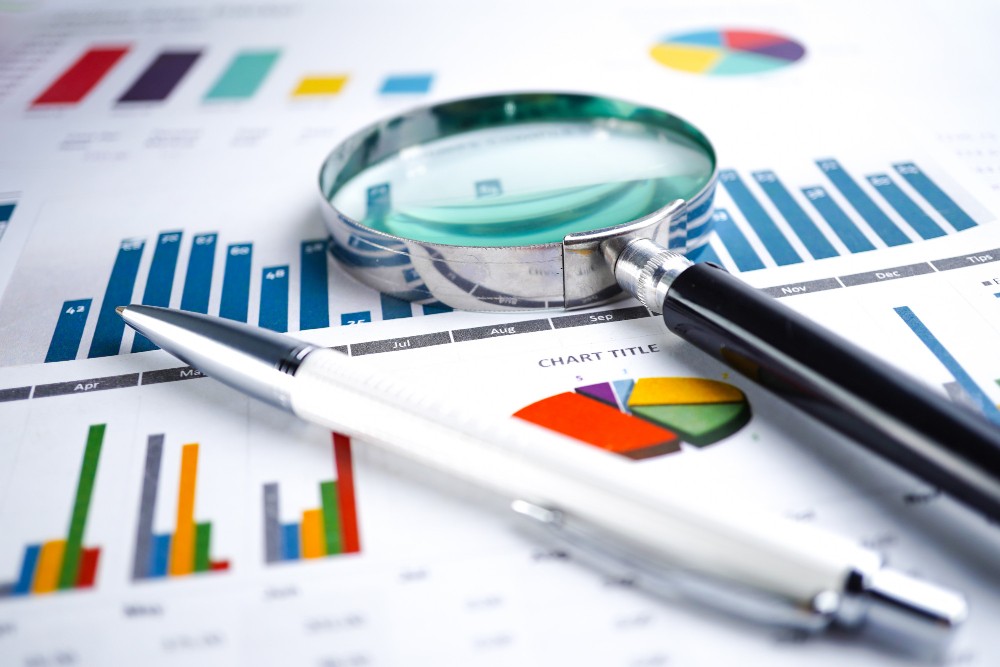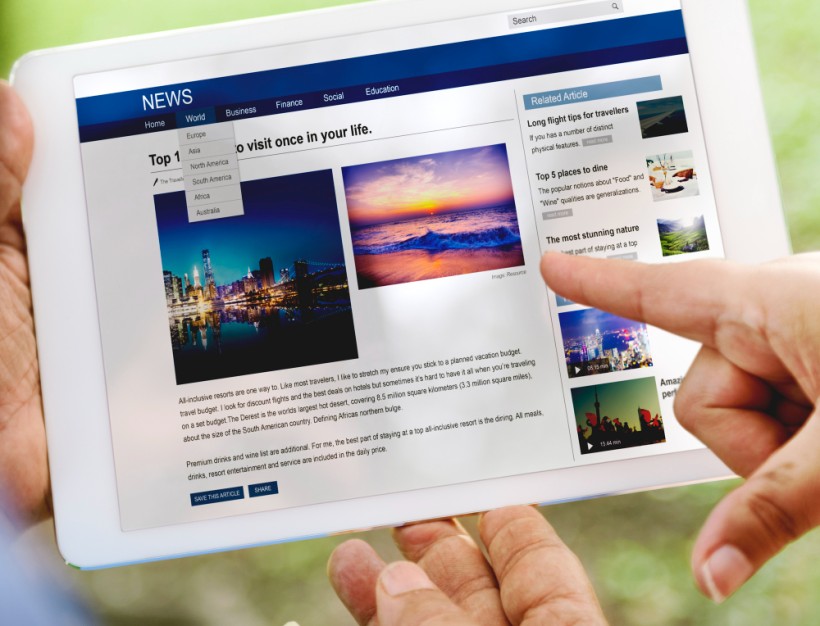Some leaders often question whether commissioning research reports is worth the time, cost, and coordination it requires. After all, why not simply publish opinion pieces or customer stories that are cheaper to produce?
The pressure to justify spending is real. In fact, 70% of B2B marketers say they face growing pressure to demonstrate ROI. That makes every investment decision — especially one as resource-heavy as original research — subject to scrutiny.
And yet, the evidence shows that research reports are among the highest-yielding formats a marketing team can produce. At Column, we’ve seen this firsthand. A single research-led report drove nearly half of our media coverage in parts of Africa, opening doors to journalists, new leads, and credibility that opinion-driven content may not deliver.
This article makes the business case for research reports. It shows how they create measurable returns in four ways: generating leads, earning media coverage, driving backlinks and SEO growth, and building authority with decision-makers.
Lead Generation and Pipeline Impact
One of the strongest arguments for research reports is their ability to generate leads. Unlike lighter content formats, research creates a clear value exchange: audiences are willing to share their details in order to access original insights they cannot find elsewhere.
74% of B2B marketers say content marketing helps them generate more leads. Within that mix, research reports stand out: 45% of marketers rank them among the formats that deliver the best results. Research also drives discovery — more than half of C-suite leaders say they have considered a product or service after engaging with a research-driven report, even if it wasn’t previously on their radar.
Column’s own experience backs this up. By publishing the Nigeria Financial Habits Report, we weren’t just adding to the conversation — we were creating the conversation. That research became the basis for half of our media coverage in the region, opening doors for leads and new business conversations that may not have started otherwise. A similar outcome happened with the State of Motshelo Report we published in August 2025. That report was widely shared among economists and other financial services professionals in Botswana, leading to sustained conversations and opportunities.
Research reports don’t just inform. They act as magnets — pulling in the kinds of prospects that generic content rarely attracts.
Media Coverage and PR Value
Journalists are always looking for fresh data to anchor their stories. That is why original research consistently outperforms generic opinion pieces in securing coverage. Numbers give reporters something quotable and verifiable — two qualities that make a story more likely to be picked up.
Our own EMEA experience shows this. Over a four-month stretch, we secured more than 14 media placements across outlets like TechCabal, Punch, and BusinessDay. While op-eds and interviews played a role, it was the research-backed reports that created the clearest hooks. Editors were quicker to respond to data-driven submissions than to opinion-led ones, and in some cases, a single report unlocked multiple placements.
This reflects a broader principle. As ValueSelling points out, original research strengthens credibility, fuels journalist interest, and creates more opportunities for earned media.
In practice, research doesn’t just add to the media mix. It often opens the door, making it easier to land coverage for other stories later.
SEO Impact: Backlinks and Organic Growth
Search visibility is one of the most overlooked benefits of producing original research. When you become the source of a statistic or trend, other companies, journalists, and analysts link back to you. Those backlinks drive both referral traffic and higher search rankings.
The impact is clear. For example, Column worked with Momentum.io on a combined SEO and thought leadership strategy. Over one year, we created more than 50 content pieces targeting end users and sales leaders, covering topics such as CRM reviews, onboarding, and sales strategy. Within six months, this work helped generate over $40,000 in pipeline revenue, and the content also fueled word-of-mouth referrals that supported Momentum’s later $5 million seed round.
The downstream effect goes beyond visibility. SEO-generated leads close at a rate of about 15%, compared with just 2% for outbound leads. That means the traffic and authority you gain from backlinks is not just vanity — it converts into pipeline with a much higher efficiency.
For Momentum and other clients, the mix of data-driven content and SEO optimization didn’t just bring traffic; it turned visibility into revenue. That’s the real power of pairing original insights with search.
Authority Building and Brand Credibility
Attention fades, but authority compounds. Research reports are one of the few marketing assets that can keep building value long after launch.
When a report is cited in media, shared by industry voices, or repurposed across formats, it doesn’t just reach audiences once, it becomes a reference point. That continued circulation is what sets research apart from one-off campaigns. Months later, a well-crafted study can still be shaping conversations and signaling credibility.
For Column, this has been one of the clearest lessons from our media work. Research didn’t only help us earn coverage, it gave us a platform to be recognized as a voice worth listening to in debates that extend beyond our brand. That recognition makes every subsequent effort easier to build on.
Multiplying ROI: How to Stretch a Single Research Report
The value of a research report doesn’t stop at the moment of publication. Treated properly, one study can fuel months of marketing activity.
Repurposing is key. A single report can be broken down into blog posts, LinkedIn updates, infographics, sales enablement decks, webinars, and newsletters. CMSWire notes that this cascading approach is one of the best ways to increase return on research investment. Each new asset extends the reach of the original data, reaching audiences who may never download the full report.
Paid amplification also plays a role. In our own work at Column, we’ve seen that low-cost paid promotion in certain markets can dramatically extend reach, especially when combined with the organic traction that research naturally generates in the press. This creates a cost-efficient blend of earned and paid media.
Finally, measurement and attribution are critical. Tracking where coverage appears, what traffic it drives, and how leads flow through the funnel ensures the report is valued for real outcomes, not vanity metrics.
A well-planned research report isn’t just a one-off campaign. It becomes a content engine that continues to pay dividends long after launch.
Costs, Challenges, and Regional Realities
Commissioning research delivers measurable returns, but it’s not without costs and complexities.
First, the work itself requires investment: survey design, data collection, analysis, writing, design, and distribution. Many teams underestimate the coordination required, and reports can stall at the design or dissemination stage if responsibilities are unclear. That delay erodes ROI.
Second, success depends on team structure and partnerships. Having local PR support in markets you don’t fully understand often proves essential. Without it, insights may not land with the right media or the right audience.
Research can yield ROI in the range of several multiples — for example, Drive Research documented a 665% return on a usability project. But to get there, companies must be honest about the real costs of producing and distributing research and about the local nuances that shape outcomes.
When these factors are accounted for, the ROI case doesn’t weaken — it becomes more realistic. That makes it easier to defend research budgets to stakeholders who are focused on measurable returns.
Original Research Report Is a Compounding Asset
Research reports remind us that influence in B2B markets is rarely won with louder claims or bigger ad budgets. It is won with clarity, credibility, and the ability to offer something others don’t have — original evidence.
When done well, research creates ripples that go far beyond a single campaign. The return is not only financial, but reputational: your company becomes a source that others depend on to make sense of change.
At Column, we’ve seen how a carefully crafted piece of research can travel across markets, platforms, and audiences — opening doors that opinion-led content simply cannot. It’s why we continue to treat research as a central part of how leaders shape public opinion.
If you want to turn original insights into influence, we’ll handle survey design, analysis, report writing, media outreach, and amplification — so your findings don’t just sit in a PDF, but reach the people who matter. Reach out to us today.

Johnson is a Content Strategist at Column. He helps brands craft content that drives visibility and results. He studied Economics at the University of Ibadan and brings over years of experience in direct response marketing, combining strategy, creativity, and data-backed thinking.
Connect with him on LinkedIn.





